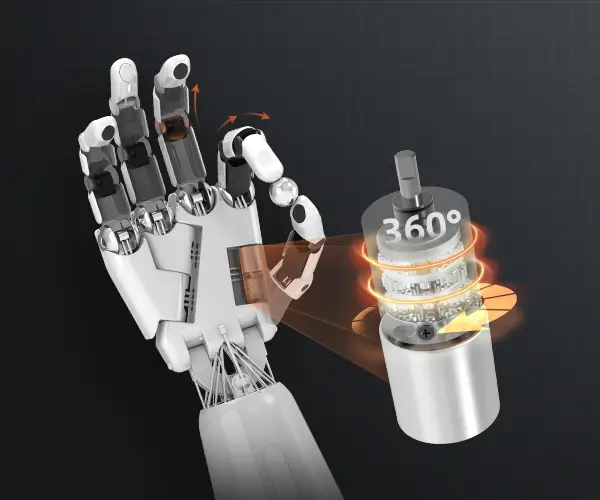part 1:
In the bustling world of industry and logistics, conveyor belt systems are the silent workhorses that keep everything moving smoothly. They are essential for transporting goods, raw materials, and finished products across factories, warehouses, airports, and even food production lines. While the conveyor belt itself might catch the eye at first glance, the true backbone of any reliable conveyor system lies beneath its surface: the motor and gearbox.

Imagine a factory floor without conveyor systems — chaos, inefficiency, and a massive leap in labor costs. The real magic behind their seamless operation is the harmony between the conveyor belt and its power source: the motor. This specialized component converts electrical energy into mechanical motion, initiating a chain of events that moves products along the production line with precision and control.
But a motor by itself isn't enough. It needs to deliver torque, control speed, and withstand continuous operation — all of which are managed by a carefully selected geared rotary device called a gearbox. The gearbox acts as a mindful intermediary, translating the high-speed, low-torque output of the motor into a controlled, high-torque rotational force suitable for moving heavy loads at a steady pace.
The vital role of conveyor belt motors
Conveyor belt motors come in various configurations to suit different operational requirements. Depending on the application, you might find AC motors, DC motors, or even brushless motors powering these systems. Each offers benefits tailored to specific use cases.
AC motors, for example, are favored for their durability, simplicity, and efficiency at high loads — perfect for heavy-duty industrial applications. They are often used in fixed-speed conveyor systems, where the process demands consistent, reliable motion. DC motors, on the other hand, excel where variable speed control is necessary, offering precise adjustments for delicate or complex operations.
In recent years, the rise of energy-efficient and smart motor technologies has been revolutionizing conveyor systems. Variable frequency drives (VFDs) allow motors to adjust their speed dynamically, leading to significant energy savings and enhanced process control. This flexibility means factories can optimize throughput while reducing power consumption—a win-win that benefits both bottom lines and sustainability goals.
The gearbox: making torque manageable
While the motor provides the initial power, the gearbox's role is to refine and adapt that power to the needs of the conveyor. Gearboxes essentially modulate the speed and torque levels, offering different gear ratios to match system requirements. For example, moving a lightweight product on a gentle incline might require a different gear setup than transporting heavy, bulky items.
There are various types of gearboxes—spur, helical, planetary, and worm gearboxes are among the most common in conveyor applications. Spur gearboxes are simple and cost-effective, suitable for straightforward operations. Helical gearboxes offer smoother and quieter operation, ideal for continuous use. Planetary gearboxes, renowned for their high torque capacity and compact design, are often used in high-performance systems. Worm gearboxes provide high gear ratios and self-locking capabilities, making them perfect for certain safety-critical applications.
The precision engineering of modern gearboxes ensures minimal energy loss during power transfer, maintaining system efficiency over time. They also contribute significantly to system longevity, as high-quality gearboxes can operate smoothly for decades with proper maintenance.
Integration and customization
One of the most fascinating aspects of conveyor belt system design today is the integration of motors and gearboxes tailored precisely to meet specific operational demands. Manufacturers now offer modular, customizable solutions that allow engineers to select the optimal motor-gearbox pairing.
Whether it's designing a conveyor for high-speed packaging lines, handling abrasive materials in mining, or delicately transporting electronics in a cleanroom environment, the combination of motor and gearbox can be fine-tuned for maximum performance. This customization ensures the conveyor system not only runs smoothly but also integrates seamlessly with automated controls, sensors, and safety features.
Energy efficiency and environmental considerations
The push toward greener industry practices has significantly impacted how conveyor systems are designed and maintained. Energy-efficient motors, combined with advanced gearboxes that reduce power loss, contribute to lower carbon footprints. Companies now prioritize low-energy motor options, coupled with regenerative drives that recover and reuse energy during deceleration phases.
Furthermore, modern gearbox lubricants and sealed designs decrease maintenance needs, reducing downtime and environmental waste. Choosing the right motor and gearbox combination helps companies meet sustainability targets without sacrificing productivity.
Looking ahead: innovations shaping the future
The future of conveyor belt motors and gearboxes looks promising, with technological advancements promising to push the envelope even further. Developments like smart motor systems, equipped with sensors and IoT connectivity, enable predictive maintenance — catching potential failures before they happen, thus reducing costly downtime.
Magnetic gearboxes are emerging as a maintenance-free alternative, offering zero wear and tear, and whisper-quiet operation. Likewise, high-precision servo motors paired with compact planetary gearboxes are enabling conveyor systems that can handle intricate, multi-axis movements with unprecedented accuracy.
The integration of artificial intelligence and machine learning into motor and gearbox management promises even smarter, more adaptable conveyor systems. These innovations could lead to fully autonomous material handling solutions, optimizing operation in real time based on data analytics.
Established in 2005, Kpower has been dedicated to a professional compact motion unit manufacturer, headquartered in Dongguan, Guangdong Province, China.




































